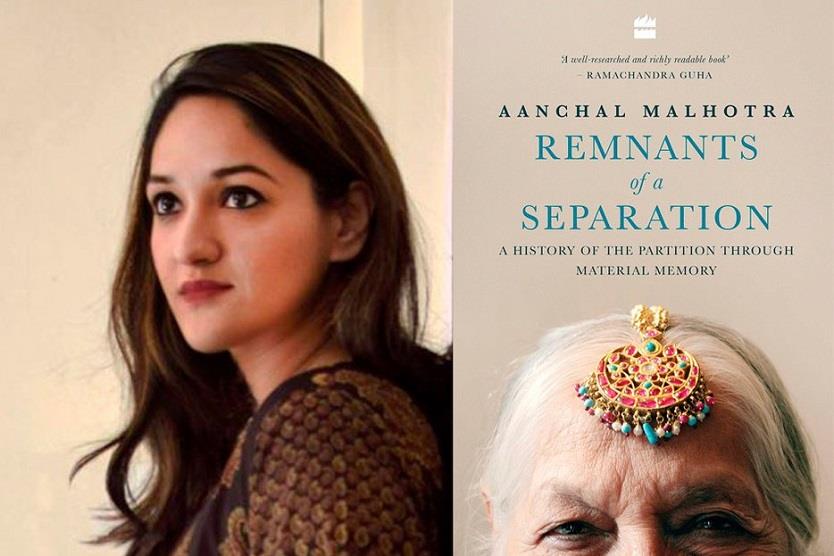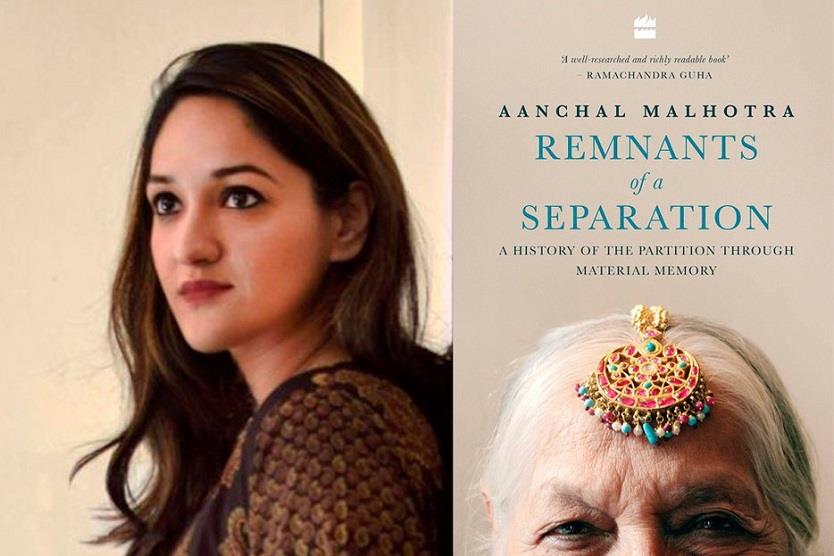
Partition Postcard
The book“Remnants of Separation” by Aanchal Malhotra documents tragedy per square meter
By Khann Ahmad Hilal
HISTORY is brutal. History is terrific too. History can never be erased from memories. Historical facts and events cry to be documented for the future. History, always, has a lesson for the future. To revisit the past is to relive a time gone by, and learn from it. Partition is not an event of the past. Its consequences are still in operation. Its heaviness continues to weigh down. Its ingredients are personal and not negotiable with another. A partition divides families and friends, colleagues, and people who love one another. It creates turmoil. Partition of Hindustan in 1947 spilled blood on the streets. Innocents were trampled. A mad orgy of sorts it was. This painful history and the remnants left behind are beautifully weaved by Aanchal Malhotra.
The book titled 'Remnants of Separation' is a treasure of memories. It is one of the exceptional attempts by Aanchal to relive the past through material objects that refugees carried with them across the border when the great and biggest human migration happened on earth in 1947. It is an archive of memory, of stories, of violence, of lost friends and relatives.
A nicely woven collection of stories on either side of the border, the book is the toil of the author's years of painstaking and passionate research. It widely talks about familiarity and love between Hindus and Muslims which was seen as the precedent of two communities during undivided India. When Lahore and Amritsar, Karachi and Bombay, Phulkari and Pashmina, Topi, Tika, and Turban were all one. But then came to the unholy rush, brutality, and madness seeped in that turned homes into houses, friends into foes. Neighbours turned murderers, Burglars, and marauders. Relationships changed. The same Lahore and Amritsar drenched in the blood of all. In the smell of burning limbs and bones. People became strangers to the very place they called home. There are some passages in time whose horrors should never be repeated. The partition is one such horror. It has evolved people into stories.
Time swallows the past. The past can reside in odd heirlooms and fraying books, within the folds of clothes and the embroidered ends of handkerchiefs, in the pearl drop of an old erring, and the rustic of an ancient and abandoned lock. These are the quietest bearers of personal histories. The stories told through the material objects have a way of inspiring the mind to remember things it might have forgotten. Objects which they hold very close and dear. Associated with them are memories, which sustain them, which they wish had never had. Memories still hold their keepers to their homes, to that land that nourished their souls. Stories that remain in families scar so much so that it is rarely revealed to the generations to come. Some believed that it is essential to remember the past, whereas some thought it is better to forget the bitter memories but human memory is fragile. It only carries memories, too heavy to bear. Memory dilutes but the object remains unaltered.
Well-written stories about soil and rain, fields and clouds, families and their traditions and customs, about love and relationship, about landscape and language, music and art, literature and poetry, about accounts and anecdotes, longing and loss, melancholic and paralyzing nostalgia. The book delves into human memory to re-tell a story and re-visit places and relations. The author has penned down stories with great impartiality with sensitivity and conviction about the wounds that the people of the two nations have collectively inherited with a heart-warming and engaging language.
This book is an amalgamation of many versions from both sides of this man-made border. It speaks of the yearning for houses, bazaars of Karachi, of a man's home in Jalandhar whose stone plaque made his way back to him after so many years. Of that house, that childhood, that courtyard, those summers, those winters. It touches the right chords of your heart and mind. Memories attached to the objects ranging from kitchen utensils to books and poems will take you on a nostalgic journey and leave you with a longing saga of a past that you haven't lived. Every story is written with subtle rawness and honesty and delicacy. It is reliving a great tragedy through material memory. The accounts of people interviewed in the book are moving and make the reader's eyes wet as we travel back to the 75-year-old horror.
Aanchal has reclaimed the impression of shared history by rekindling subcontinental stories. She truly is an inspiration to the writers of our generation. This book is worth a grab. It will be like a walk through a museum in the pages of a book that surely will leave an impact on you and will transport you to the days of partition.
- The author is from Keran Kupwara and can be reached at [email protected]
Follow this link to join our WhatsApp group : Join Now

Legal Disclaimer:
MENAFN provides the
information “as is” without warranty of any kind. We do not accept
any responsibility or liability for the accuracy, content, images,
videos, licenses, completeness, legality, or reliability of the information
contained in this article. If you have any complaints or copyright
issues related to this article, kindly contact the provider above.




















Comments
No comment